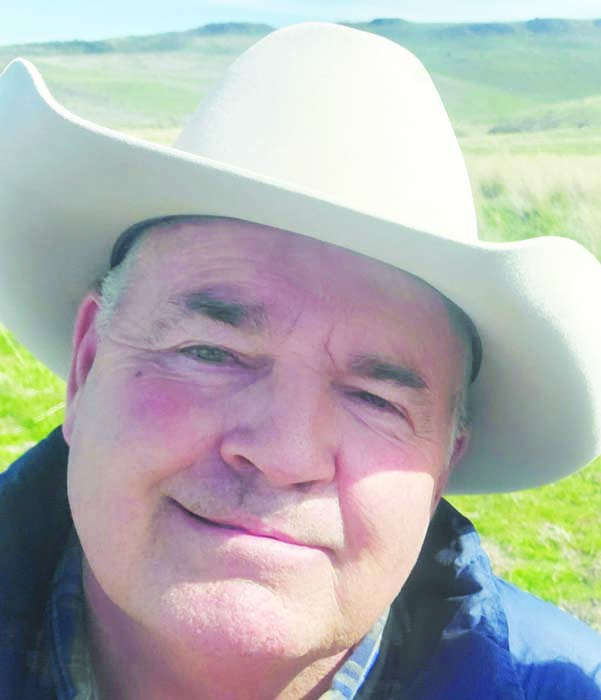State board meets Baker County rancher striving to protect sage grouse
Published 9:15 am Monday, April 29, 2024

- Widman
LOVE RESERVOIR — Mike Widman looks across the slope of sagebrush and bunchgrass that his ancestors first walked across more than a century and a half ago.
It is uncommonly green on this sunny afternoon of April 23.
Testament to a winter with a decent snow, and a spring that so far has been generous with its rain.
Widman, 59, points to a wooden building half a mile or so to the southeast, a structure of weathered boards standing near one of the many draws incised into the northern flanks of Little Lookout Mountain.
“That’s where it all started,” he tells the group of about 40 people standing in the mild sunshine, listening to him speak.
Widman’s great-grandparents homesteaded here in the 1860s.
More than a century and a half later, he continues to tend this land.
Widman, who lives in Baker Valley, raises black Angus cattle, moving them between fenced pastures during the spring, summer and fall before moving the animals back to the valley to eat the hay he raises there for winter feed.
The old, traditional cycle.
But although Widman’s business is beef, cattle aren’t his only concern as he decides how to manage his more than 10,000 acres.
He also strives to keep the range, a mixture of sagebrush and grass, in good shape to benefit a bird that has been a candidate for federal protection for a couple decades.
The sage grouse.
“I love ’em,” he told the audience who had driven bumpy dirt roads to this spot a couple miles east of Love Reservoir, about 18 miles east of Baker City.
The group included members of the Oregon Watershed Enhancement Board who gathered in Baker City for a two-day meeting that included this field trip.
In 2019 the board awarded a $6.1 million, six-year grant, made up of Oregon Lottery revenue, to Baker County for sage grouse conservation work in the county.
Widman is one of several ranchers who have enrolled in a Candidate Conservation Agreement with Assurances deal with the state.
Although the landowners don’t receive any money, they agree to take certain steps on their property, such as altering cattle grazing schedules and controlling invasive grasses such as medusahead, to help sage grouse.
In return, the ranchers won’t be required to take additional steps if the sage grouse is ever listed under the federal Endangered Species Act.
“It’s been a great project,” Widman told the group, which includes officials from several state and federal agencies as well as the Oregon Watershed Enhancement Board.
State and federal biologists have fitted tracking bands to 20 sage grouse on and near Widman’s land.
Widman said that although he was happy to enroll more than 10,000 acres of his land in the program through the sage grouse grant, he didn’t really change how he manages the pastures.
Fighting noxious weeds and encouraging the growth of native grasses can help both cattle and sage grouse, he believes.
“I try to take care of my ranch,” he said.
After the lightning-sparked Sardine fire burned a large swath of his land in 2012, Widman said he kept cattle off the land until the newly seeded native grasses, including Idaho fescue and bluebunch wheatgrass, had a roothold.
Widman said money through the sage grouse grant has helped him improve parts of his land, in addition to what he estimates is $400,000 he has spent over the past two decades or so.
Brian Ratliff, district wildlife biologist at the Oregon Department of Fish and Wildlife’s Baker City office, attended the April 23 tour.
He told the group that he has worked with Widman for 20 years to help the rancher with his efforts to keep his range healthy for cattle and for wildlife, including sage grouse.
Ratliff credited Widman’s grazing strategy — including moving his cattle frequently so they don’t overgraze the range — with preserving habitat but also helping the land recover relatively quickly after the Sardine fire.
“His ground was capable of handling that fire,” Ratliff said.
Shanda Zettle, coordinator of the Tri-County Cooperative Weed Management Agency, which works to control noxious weeds in Baker, Union and Wallowa counties, told the tour group that Widman’s ranch is in the heart of core habitat for sage grouse.
“Mike has good habitat,” Zettle said.
She said her agency has used Widman’s ranch as a sort of anchor for efforts to control noxious weeds on lands adjacent to his property.
It’s an ongoing challenge, Zettle said.
Widman agreed.
Fires and drought can give weeds an advantage, as they typically are the first vegetation to return after any major disturbance.
Widman said his biggest concern, though, about sage grouse is the threat posed by ravens.
The birds — two of which soared overhead just before the tour group arrived — eat sage grouse eggs and chicks.
ODFW is in the final year of a four-year project in which ravens are being killed, and their nests destroyed.





